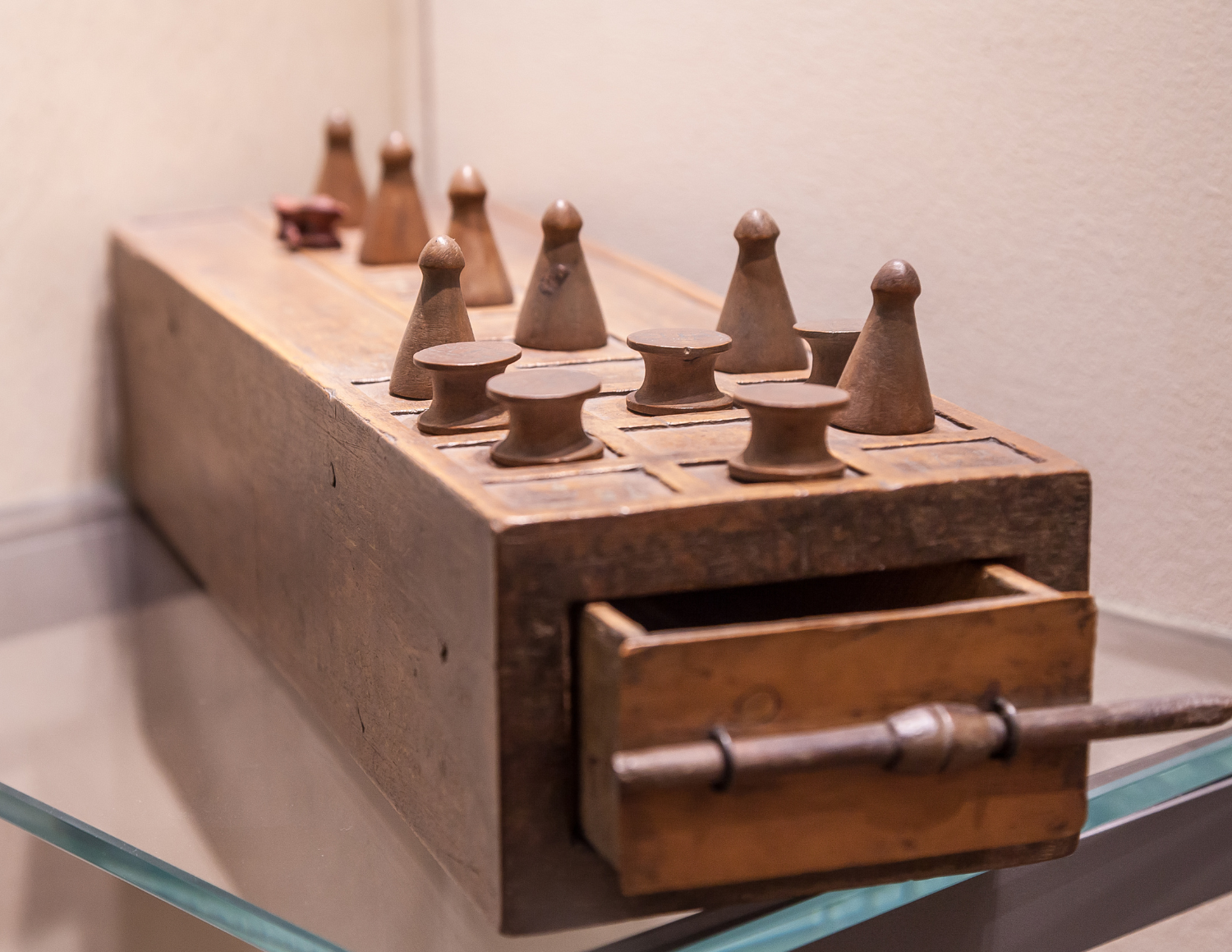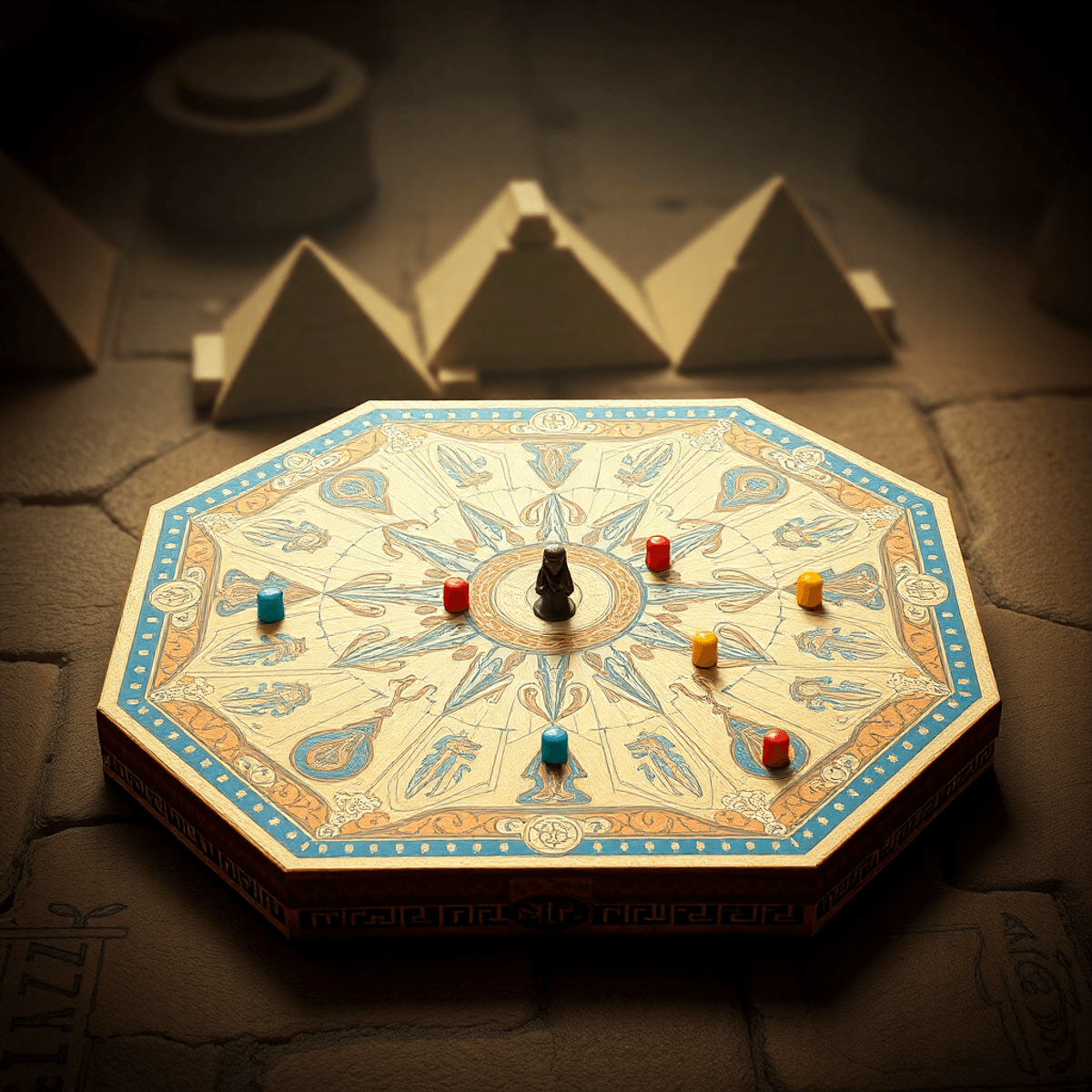
The Senet game history dates back more than 5,000 years, making it one of the oldest known board games in existence. It originated in Ancient Egypt, where it was initially a simple pastime. However, over time, it evolved into something far more significant.
Archaeologists have found Senet boards carved into temple floors and tombs, proving its widespread popularity. More importantly, pharaohs and nobles were buried with Senet boards, suggesting that it played a role in Egyptian beliefs about the afterlife. The game was seen as more than just entertainment—it was a metaphor for the soul’s journey through the Duat, the Egyptian underworld.
🎲 How to Play Senet: Rules & Gameplay
Although no official rulebook has survived, scholars have reconstructed the Senet game history using ancient texts and artwork. Senet was a race-based board game, combining strategy and luck, where two players competed to remove their pieces from the board before their opponent.
Main Elements of Senet:
- The Board: A grid of 30 squares arranged in three rows of ten. Some squares had special symbols that could help or hinder a player’s progress.
- The Game Pieces: Each player used 5 to 7 cone- or spool-shaped pieces.
- The Movement Mechanism: Instead of dice, players threw casting sticks or knucklebones, determining how many spaces they could move.
- The Objective: The goal was to navigate the board and exit safely, which symbolized a successful journey through the afterlife.
Winning required both strategic decision-making and favorable divine intervention. Egyptians believed the gods influenced the game’s outcome, reinforcing Senet’s role as a test of fate.
🏛 The Spiritual Significance of Senet
By the New Kingdom period (1550–1070 BCE), Senet game history had evolved beyond recreation. It became a symbol of spiritual enlightenment, representing the soul’s struggle to overcome obstacles in the afterlife.
Ancient Egyptian texts, including The Book of the Dead, describe the game as a sacred journey. The game board’s final squares symbolized rebirth and protection by gods like Osiris and Ra.
Because of this, many pharaohs, including Tutankhamun, were buried with elaborately decorated Senet boards. Egyptians believed that if a deceased person could successfully play and win Senet, they would gain safe passage into eternity.
🏆 Senet’s Influence on Modern Games
Although Senet eventually faded from common play, its legacy lives on in modern gaming. In fact, many strategy and race-based board games share similarities with Senet game history.
For example, Backgammon—which also involves moving pieces based on chance and strategy—has a similar board layout and mechanics. Likewise, modern games that combine luck and skill, such as Ludo, reflect aspects of Senet’s design.
Today, history enthusiasts and board game lovers have revived Senet, making it available as a reconstructed playable game. Some game designers have even created modernized versions of Senet, allowing players to experience an authentic piece of gaming history.
📜 Where Can You See Ancient Senet Boards?
If you want to see real Senet boards, several museums display original artifacts:
- The British Museum (London, UK) – Features well-preserved Senet boards, including some with hieroglyphic markings.
- The Metropolitan Museum of Art (New York, USA) – Displays Senet boards alongside ancient Egyptian relics.
- The Egyptian Museum (Cairo, Egypt) – Houses some of the most well-documented Senet discoveries.
Visiting these museums offers a fascinating glimpse into Senet game history and its importance in ancient Egyptian culture.
🎭 Conclusion: A Game That Defied Time
The Senet game history proves that board games have long been intertwined with culture, strategy, and spirituality. Senet was not just entertainment; it was a reflection of fate and divine will. Its influence still lingers today, making it a true timeless classic.




